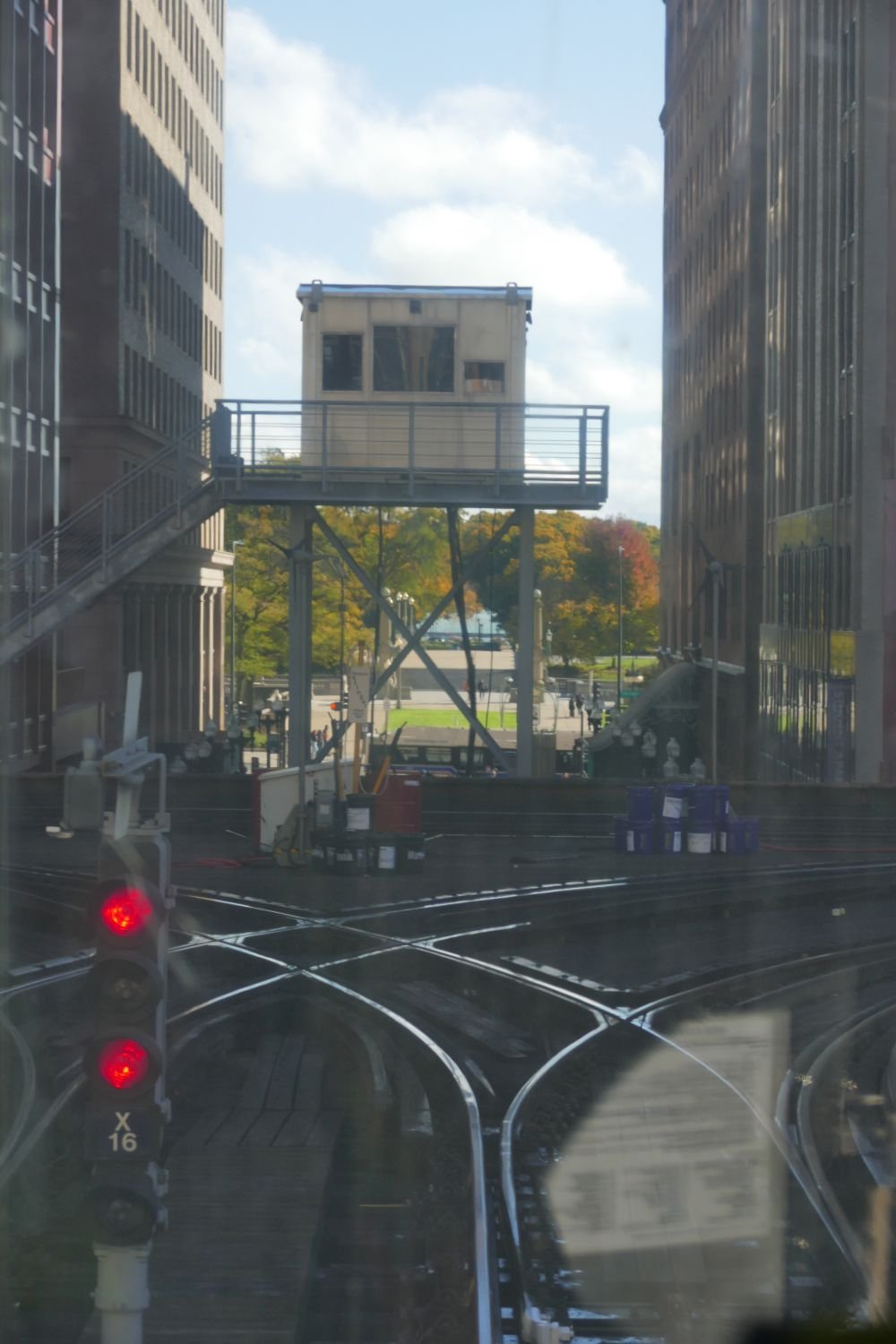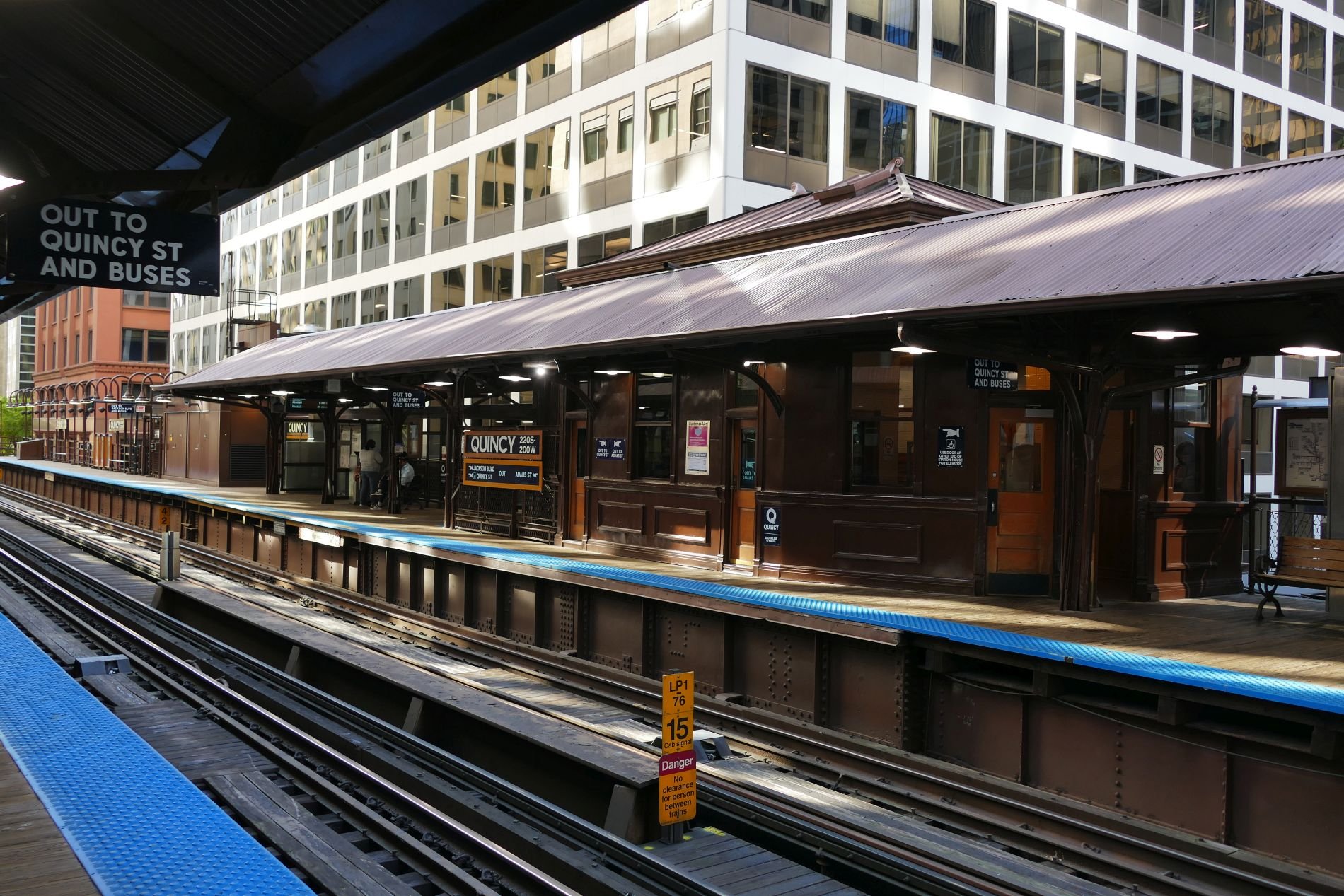Rock Island Line
The Rock Island Line is a mighty good road
The Rock Island Line is the road to ride
The Rock Island Line is a mighty good road
If you want to ride you gotta ride it like you find it
Get your ticket at the station for the Rock Island Line
In Britain, the ‘Rock Island Line’ is probably better known as the American folk song, made famous by Lonnie Donegan, than the Chicago, Rock Island and Pacific Railroad which forms the subject of the song’s lyrics. The history of both the Rock Island railroad and the song is convoluted and there are some interesting parallels between their development. These will become apparent as we take a look at the Chicago railroads, one of the ‘elements’ of Chicago which we identified in Blog 120 (we’ll come back to the final element, water, sometime in the New Year).
The history of American railroads appears to be extraordinarily complicated. Early rail based transport systems seem to have consisted of relatively short stretches of line to transport coal and stone from quarries and mines, often using horse power or gravity. Longer distance, locomotive drawn railroads appeared in the eastern states by the 1840s usually connecting two fairly large cities in fairly close proximity. Links were then developed as new settlements and markets opened up, making the railroad map seem fairly haphazard in comparison with the European system of servicing an already well known geography.
This quote from the Britannica website is a delight and seems to sum it all up:
“It was the brute strength of American locomotives, their great tolerance of cheap and crude track, their durability, their economy of operation, and their simplicity of maintenance that determined almost from the first years of operation that there would be a distinctively American railroad sharing little with British practice.”
The quote continues: “It seems reasonable to argue that once the British had shown that railroads could be made to work the Americans reinvented them for a very different terrain, economic climate, and demographic level. The creation of the American railroad was a contemporaneous but not a derivative development.” https://www.britannica.com/technology/railroad/Early-American-railroads
Chicago’s first railway (not even started until 1848) was the Galena & Chicago Union, which was planned to connect the city to the lead mines at Galena (north west Illinois) but which never got further than a place called Elgin, a mere 40 miles from the city centre. A shaky start, perhaps, but it wasn’t long before Chicago was connected by railroad to the great grain fields of Illinois and Wisconsin and then to numerous mid-west cities.
Inevitably, Chicago’s significant location between east and west coasts, combined with excellent water transport options and the natural resources to build tracks and fuel engines, meant that the city became the core of the American railroad system.
According to “Illinois Railroads in 1901” (http://www.genealogytrails.com/ill/cook/railroads.html), “not less than thirty-eight distinct lines enter … [Chicago in 1895], although these are operated by only twenty-two companies. Some 2,600 miles of railroad track are laid within the city limits. The number of trains daily arriving and departing (suburban and freight included) is about 2,000. Intramural transportation is afforded by electric, steam, cable and horse-car lines. Four tunnels under the Chicago River and its branches, and numerous bridges connect the various divisions of the city.”
This chaotic network of railroads, coming from all corners of the nation, restructured the landscape and the future of Chicago. Most companies set up their headquarters in the city and built the necessary infrastructure to operate the railways and to tranship what they carried: manufactured goods from the east, grain from the prairies, timber from the north and meat from the west. And people: people from all over the United States and from all over the world – both the free world and the freed populations from the Caribbean - poured into Chicago. No wonder the railroads became legendary.
Above: freight trains were and still are the back bone of the US railway system.
But back to the Rock Island Line. The precursor of the Chicago, Rock Island and Pacific Railroad was, geographically, a wholly Illinois affair, born in 1847 and, according to Britannica, reached Chicago by 1866. It quickly extended both its name and its network and, by 1907 the line had attained its maximum length of 14,270 miles (22,975 kilometres) [Britannica again] over 13 states to the west and south of Chicago. It was, indeed, something to sing about.
According to Wikipedia (https://en.wikipedia.org/wiki/Rock_Island_Line) the earliest known version of the song was written in 1929, by one Clarence Wilson, a member of the ‘Rock Island Colored Booster Quartet’, a group of Railroad employees who worked at the Biddle Shops freight yard in Little Rock, Arkansas. Like the confusing and ever changing railroad companies and routes, the song has a pretty confusing history too. Although many would associate it with Lonnie Donegan’s 1956 rendition, we have John A Lomax to thank for the earliest known recording which, in Terroir’s view, is much the best. Lomax recorded it a few times, the first with the help of Huddie Ledbetter, better known as Lead Belly, at the Cummins Prison, where it was performed by Kelly Pace and Prisoners. The third recording is available on https://www.youtube.com/watch?v=0NTa7ps6sNU. It’s well worth a listen. If you think the name of Lomax is familiar, you would be right. His better known son Alan Lomax carried on his father’s work and, with the help of Shirley Collins (English folk singer extraordinaire) recorded folk music on both sides of the Atlantic.
Of course numerous others have re-arranged, re-written and re-recorded The Rock Island Line including Led Belly himself, Donnie Lonegan and Pete Seeger. It’s easy to see the history and development of this ballad as a microcosm of US railroad history and, like the railroad, you don’t hear so much about it these days.
So what is Chicago’s relationship with the railway in the 21st century? The massive meat packing, timber and other freight yards, which characterised much of the 20th century, are now long gone, built over by ever continuing expansion of a new style metropolitan Chicago. Much of the associated railway architecture has also vanished and freeways and airports have taken their place.
Some remnants of former glory still remain and the pictures below illustrate elements of multiple tracks still in use and the tiny signal boxes which once controlled vast numbers of train movements.
One aspect of railway life does remain however, and is now devoted to carrying people rather than livestock, timber and grain. Chicago's 19th century railroad depots were located at the edges of the business district and provided a circle of stations around the city centre. This pattern was an obvious route for a city centre rapid transit system and the first elevated lines (cheaper than subways) were constructed in the 1890s.
This is the Loop, the elevated lines which enclose the core of Chicago city. If it’s not happening within the Loop, then you probably don’t want to know about it. The Loop carries thousands of passengers a day on, yes, a very confusing system of coloured railroad route possibilities.
Today, the ‘L’ trains (L for elevated), scuttle round the city like an enormous model railway, nipping between high rises, shooting through canyons, and leaping over busy thoroughfares like a greyhound on a race track.
Once started, the system soon threw out several tangents to connect the city centre with its ever growing suburbs. These tentacles have been forced to stretch further and further out as the city continues to expand.
The modern stations are strictly utilitarian, but Quincy, on the Loop itself, has been allowed to retain some of its earlier glory.
The Loop is no urban pussy cat, however. On its equivalent to the London Tube map, the Loop is represented by a sedate rectangle but rattling around those corner curves is far more exciting than the hidden, swaying, bends of the London Underground.




























